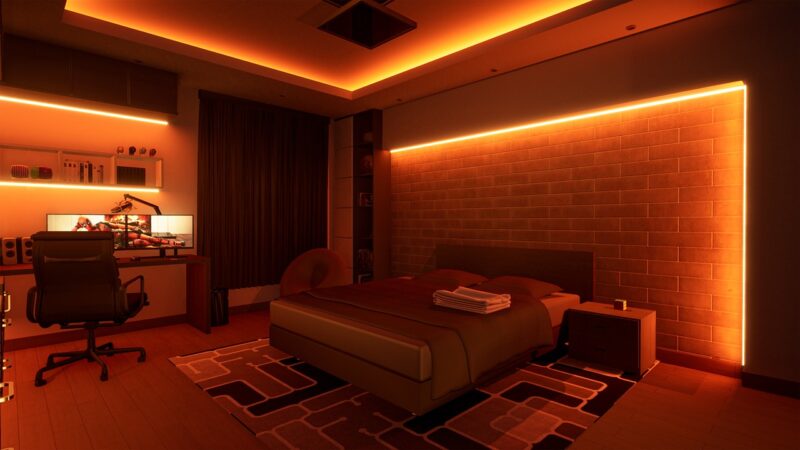Why AMD’s Graphics Cards Are Gaining Ground in the Gaming Industry
November 12, 2024

In the rapidly evolving world of gaming technology, graphics cards play a pivotal role in delivering high-quality visuals and smooth gameplay. While NVIDIA has been the dominant player in the market for years, AMD has been making significant strides in recent times. With the introduction of its latest GPUs, AMD is not just competing; it is beginning to carve out a substantial share of the gaming industry. This article delves into the reasons behind the gaining ground of AMD’s graphics cards, the technology driving these advancements, and what the future holds for gamers and enthusiasts alike.
1. The Rise of AMD: A Brief History
AMD (Advanced Micro Devices) is no stranger to the tech industry. Founded in 1969, the company initially focused on microprocessors and quickly gained recognition for its innovative solutions. Although AMD faced stiff competition from Intel in the CPU market, its foray into graphics cards began in the early 2000s, culminating in the acquisition of ATI Technologies in 2006. This acquisition enabled AMD to develop a robust graphics card segment, laying the groundwork for future innovations.
Despite fluctuating success over the years, AMD’s Radeon RX 5000 and RX 6000 series have demonstrated its commitment to high performance, giving gamers a compelling alternative to NVIDIA.
2. Competitive Pricing Models
One of the primary reasons why AMD’s graphics cards are gaining traction is their competitive pricing strategy. In recent years, NVIDIA’s high-end GPUs have seen price hikes, making them less accessible to budget-conscious gamers. In contrast, AMD’s RX series generally offers similar, if not superior, performance at a more economical price point.
For instance, AMD’s RX 6800 and RX 6800 XT provide excellent performance for 1440p gaming while being significantly cheaper than NVIDIA’s RTX 3080. This value proposition appeals to gamers seeking to balance performance and budget, leading to increased sales for AMD products.
3. RDNA Architecture: A Game Changer
At the core of AMD’s recent success is its RDNA (Radeon DNA) architecture, which has received rave reviews for efficiency and performance. The RDNA architecture, found in both the RX 5000 and RX 6000 series, focuses on improving performance per watt, which significantly enhances the gaming experience.
Key features of RDNA architecture include:
- Improved Performance: RDNA’s design allows for higher frame rates in games while consuming less power, enabling smoother gameplay and longer-lasting systems.
- Enhanced Graphics: The RDNA architecture supports advanced graphic features such as ray tracing, providing gamers with realistic lighting and shadows, elevating the visual fidelity of gaming experiences.
- Lower Heat Output: The increased efficiency results in lower heat production, allowing for quieter systems and promoting better thermal management.
As more gamers are becoming aware of the benefits that RDNA offers, AMD’s graphics cards are gaining a reputation as products worth considering in the competitive landscape of gaming technology.
4. The Impact of Ray Tracing
Ray tracing has taken the gaming industry by storm over the past few years, offering enhanced visual experiences that were once thought impossible in real-time. Although NVIDIA was the first to market with ray tracing technology, AMD has since introduced support for this feature in its RX 6000 series GPUs.
By delivering competitive ray tracing performance, AMD is appealing to gamers looking for cutting-edge graphics capabilities. Titles such as “Cyberpunk 2077” and “Assassin’s Creed: Valhalla” showcase the potential of ray tracing, prompting gamers to prioritize GPUs that can adequately handle such features. As developers increasingly adopt ray tracing in their games, AMD’s support for this technology will likely bolster its standing in the market.
5. Optimized Gaming with Smart Access Memory and FidelityFX
AMD has been an innovator in optimizing gaming performance through features designed to enhance gameplay. Two standout technologies are Smart Access Memory (SAM) and AMD FidelityFX.
- Smart Access Memory: This technology allows AMD Ryzen 5000-series processors to access the full VRAM of compatible AMD graphics cards, resolving a significant bottleneck that affects performance. This feature can lead to significant increases in frame rates in supported games, bridging the gap between CPU and GPU performance.
- AMD FidelityFX: FidelityFX is a collection of visual enhancement tools that developers can integrate into their games, designed to elevate both quality and performance. With features such as Contrast Adaptive Sharpening (CAS) and Super Resolution, game visuals can be optimized without compromising frame rates.
These technologies show AMD’s commitment to maximizing both gaming performance and visual fidelity, encouraging gamers to choose their products over competitors.
6. Growing Game Library and Developer Support
As gaming evolves, developers are continuously exploring ways to harness the power of advanced hardware. The growing library of games optimized for AMD graphics cards and their hardware features presents a distinct advantage for AMD in the gaming space.
AMD’s partnerships with major game developers have led to games being developed with its features in mind. This focus on game optimization gives AMD users a more seamless experience, ultimately contributing to gamer satisfaction. Furthermore, as AMD hardware gains prominence, more developers will likely prioritize optimization for AMD systems, leading to an ongoing cycle of growth and popularity.
7. Looking Ahead: AMD’s Future in Gaming
As we look to the future, AMD is poised to continue expanding its influence in the gaming market. With the anticipated introduction of next-generation GPUs and continued development of RDNA architecture, the possibilities for further growth are staggering.
A few upcoming trends to watch for include:
- Increased Integration with Next-Generation Consoles: AMD’s GPUs power the latest gaming consoles such as PlayStation 5 and Xbox Series X, enabling further brand awareness and adoption within the gaming community.
- Innovation in Graphics Technology: Continuous research and development will lead to advancements that will challenge NVIDIA’s current position, allowing AMD to keep raising the bar regarding graphics fidelity and performance.
- Strengthening Partnerships: Expect AMD to form new partnerships with game developers and technology companies, streamlining optimization processes for enhancement in overall gaming experiences across the board.
With its focus on cutting-edge technology and responsiveness to gamers’ needs, AMD is positioning itself as a formidable competitor to NVIDIA and continues to gain ground in the gaming industry.
Conclusion
The gaming landscape is witnessing a transformative shift as AMD’s graphics cards rise in popularity. Competitive pricing, innovative architecture, the incorporation of ray tracing, and ongoing developer support have all contributed to this ascent. As more gamers acknowledge the benefits of choosing AMD, the company’s position in the market is likely to strengthen.
As technology continues to evolve, AMD’s commitment to creating powerful, efficient, and affordable solutions for gaming enthusiasts assures its potential to remain a key player in the industry for years to come. Whether you’re an avid gamer or just entering the world of video games, keeping an eye on AMD’s advancements is essential as they undoubtedly influence the gaming experience moving forward.







